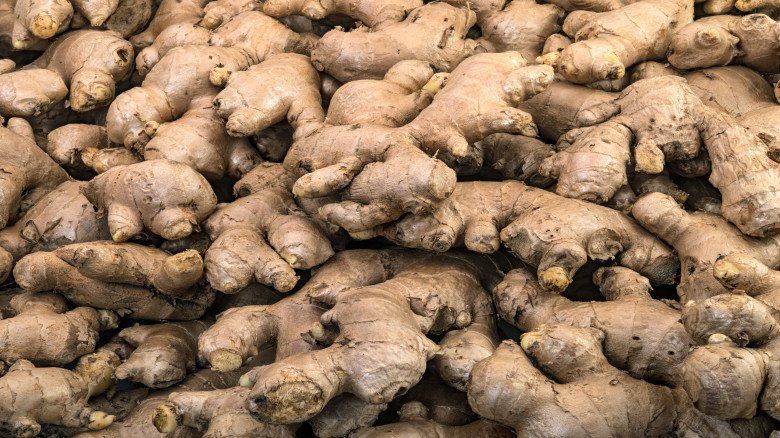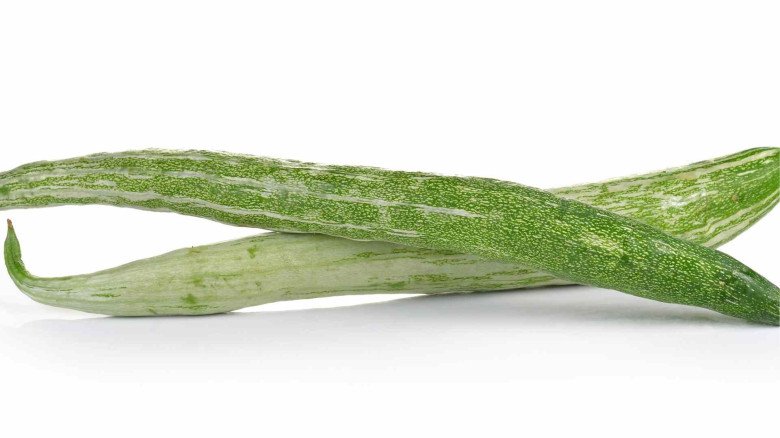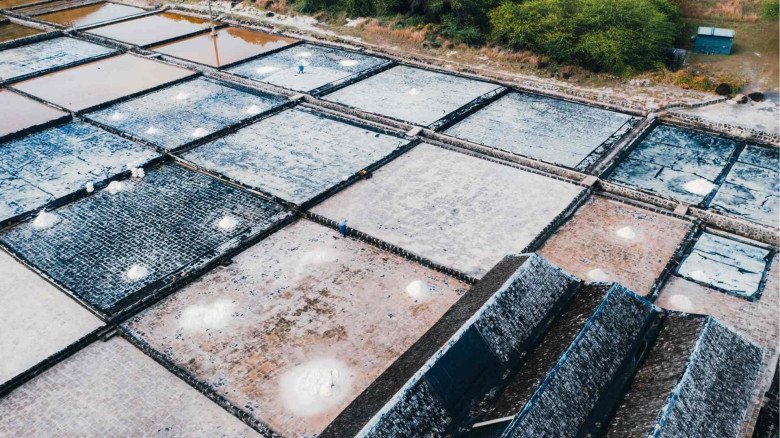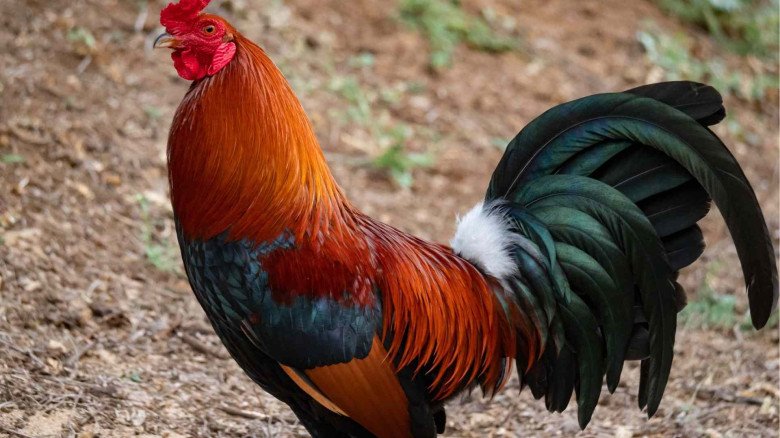Water Scarcity |10 Tolerant of dry conditions Crops to Plant
These fruits and vegetables will grow even in the hottest weather.
Concern over water scarcity is rising. The world of food and agriculture is becoming more and more dominated by a lack of water due to protracted, recurrent droughts. It has increased grocery costs and reduced farmers' harvests. Scientists at NASA claim that the last 20 years have seen some of the driest weather ever recorded. Furthermore, according to current federal data, over half of all states are experiencing a severe drought or worse.
The current water problem is an excellent opportunity for enthusiastic gardeners, particularly those in the West, to reevaluate what crops they should plant. Certain types of plants, including citrus, rice, and almonds, need a lot of water.
Others that fall under the category of drought-tolerant crops need very little. Therefore, you don't have to allow a lack of water to prevent you from developing. You may cultivate a variety of crops that need very little water. Explore our guide, which outlines several planting choices.
Figs
Fig trees Ideally, they should be placed in an area that receives seven to eight hours of direct sunlight. This plant also requires soil that drains properly and has a pH of 6.0 to 6.5. It is better to have sandy soil than loamy or clay-based ones.
Plant your trees between early spring and late autumn. Fig trees need lots of space in addition to direct sunshine. Make sure there is a space of 15 to 20 feet between any trees you plant. We recommend giving your figs one to one and a half inches of water every week, either from irrigation or rainfall. If its leaves begin to fall off or if the foliage begins to turn yellow, you will know it needs watering.
Planting a young tree with roots two to four inches deeper than those in the nursery container will increase the tree's chances of surviving. It might take eight to ten years for ground-planted fiddle palm plants to start bearing fruit. Popular choices include the common fig, Alma, Brown Turkey, and Black Mission.
Grapes
Grapevines are capable of going for extended periods of time without water once they have matured to form long, deep root systems. Planting them in an area that receives six to eight hours of sunlight daily is advised. Sandy, loamy soil that drains effectively is preferred for grapes. Because these plants are not particularly tolerant of moisture, avoid planting them anyplace that collects water when it rains.
Every seven to ten days, if there isn't any rain, thoroughly wet the soil around each vine. Your vines require additional water if the leaves are withering and the fruit is tiny, tough, and dry. Your grapes have received too much water if their leaves are becoming yellow or if their tips get brown.
For further planting and harvesting information, see our guide on cultivating wine grapes. It may take your crop two to three years to begin producing fruit on average.
Goji Berries
Goji Berries The good news is that superfoods can still be grown with less water requirements. Choose a place that receives full sun. Although they may grow in a variety of soil conditions, goji berries thrive in well-drained soil with a pH between 6.5 and 7.0.
Plants should be placed at least six to eight feet apart between rows and three to five feet apart inside the row if you have more than one. This is to give their root systems some space. It's also crucial to remember that your soil will probably require more watering the sandier it is. It is generally recommended to apply one inch of water once a week.
Goji has to be trimmed after the first year since it belongs to the nightshade family. Sow them inside around six to eight weeks before to the last frost if starting from seed. Plant in the early spring if you decide to go with a tree or shrub.
When goji plants are two years old, they start to bear fruit. After planting, it will take three to five years to attain maximum productivity. Thirty-five days after they bloom fully, you can harvest them. Phoenix Tears and Crimson Star are the two most widely grown types that are accessible to all growers.
Mustard greens
Mustard greens, often referred to as curly or curled mustard, mustard spinach, Indian mustard, or leaf mustard, are renowned for having a spicy flavour that snaps like a radish. Soil should be loamy, rich, well-draining, and pH 6.5 to 6.8 for growing mustard greens. Additionally, full light or some shade is ideal for them. A weekly irrigation of one to two inches is necessary for mustard greens.
You may start them outside three weeks prior to your last frost date if you're starting from seed.
Water requirements for the Tendergreen and Southern Giant Curled cultivars are low-maintenance. Mustard greens require an average of 35 to 70 days to mature and become ready for harvest. If you want to continue growing and producing additional greens, you can trim the outside leaves while keeping the centre intact. Alternatively, you might give the plant a "cut-and-come again" treatment, removing all of the leaves to a height of three to four inches and allowing the stub to regrow.
Okra
Okra is a common ingredient in many southern cuisines, so the fact that it can tolerate heat and survive without a lot of water may not surprise you. We recommend Hill Country Heirloom Red, Gold Coast, or Jing Orange for types that are very tolerant of dryness.
Planting okra in a location with full light promotes optimal growth. Plant it in sand-filled, organic-rich soil that drains well. Once a week, give each square foot one inch of water. Here's where you can figure out how to compute it in gallons. Sandpaper the seeds lightly and immerse them in water for up to 24 hours beforehand to help with germination. To prevent tangled seedling roots, space your seeds nine to twelve inches apart before planting. This vegetable may usually be harvested 60 days after sowing.
Plant okra two to three weeks after the last chance of frost has gone in the spring for maximum harvests. Plant three months or more ahead of the first autumn frost for a strong harvest.
Persimmon
A persimmon may look like an orange tomato at first, but its smooth texture and tart, sweet flavour make it a valued fruit. Although persimmons may grow in a variety of soil types, the ideal soil is a well-draining loamy soil with a pH of 6.0 to 7.5, which is neutral or slightly acidic.
We recommend planting a tree over seedlings or seedlings for optimal outcomes and to reduce initial water demands. If you decide to plant a tree, wait until the soil is readily handled. This is because the root system of the tree requires a hole that is three times wider and as deep as the root ball.
Pick a location that gets full sun. It will be easier to prevent moisture buildup if you leave a few inches of mulch surrounding the tree trunk. Give your tree one inch of water every week while it's growing. Depending on the species, trees might take anywhere from two to ten years to produce fruit. Saijo, Texas, and Eureka persimmons are all excellent options for withstanding dryness.
Pitaya
Pitaya, commonly referred to as dragon fruit, is the fruit of native American cactus species. It is therefore a tasty and appealing alternative.
This tropical crop has to be grown in full sun and well-draining soil. Its soil should have a pH of between 6.0 and 7.0. Water the first six inches of soil, or around one inch per square foot. Generally speaking, you should do this once a week or as soon as the top two inches of soil are totally dry. Mulching the area surrounding the plant's base might aid in the soil's moisture retention.
Pitaya can be grown from seed, cuttings, or plants that you buy. Because pitaya cannot thrive in cold locations, it is important to maintain a temperature over 40°F all year round. 65–80°F is the ideal temperature range. It might take up to seven years for a seed to produce fruit. It usually takes two years if the plant is planted as a young one. When the fruit's outer skin flaps start to wither, you will know it's ripe. To harvest, twist off each fruit from the stalk.
Pole beans
Pole beans yield two to three times the quantity of harvest in the same amount of space as bush beans, in case you were unaware. They are dependent on the remaining water in the soil. Additionally, they like a location with full light and pH levels between 6.0 and 6.5 in well-draining soil.
Go for the Preacher or Rattlesnake Bean kinds if you want to avoid drought. Excellent choices are Willow Leaf, Louisiana Purple Pod, Worchester Indian Red, Ruth Bible, and Garden of Eden Romano.
Wait until the soil reaches a temperature higher than 60°F before planting. In climate zones that are colder than the north, it may happen as late as June, and as early as April in the south.
Make sure to leave three inches between each seed when it comes time to plant. Once a week, this vegetable requires one inch of water for every square foot. Additionally, it takes the plant 65 to 75 days to reach maturity.
Rhubarb
Because of its thick root systems, rhubarb can withstand droughts and is also resistant to freezing temperatures! It grows well on soil that is between a pH of 5.0 and 6.8. Select a planting location that receives full light and enough drainage. Also, a lot of gardeners put them on raised beds.
Valentine, Macdonald, or Victoria are well-liked options for variety. Usually, crowns—which resemble stubby roots—are used to cultivate raspberries. These can be bought from a nearby seed store or nursery. Spring or autumn are good times to plant crowns. However, if you would prefer to start from seed, we advise doing so indoors eight to ten weeks prior to the end of spring or the final frost.
With the buds one to two inches below the soil's surface, put each crown erect in the planting hole. Plants should be separated by around three feet. Water your newly planted area until the top four inches are completely saturated. Every seven to ten days, it should be watered.
It is recommended to hold off on harvesting any stalks for two growing seasons after planting. The plants are able to grow robust and fruitful over the two-year establishing phase. Rhubarb may be harvested in three weeks or less in its third year. And for eight to ten weeks in the weeks that follow, stalks can be gathered.
Swiss chard
For individuals who are either wanting to reduce their water consumption or are required to do so, Swiss chard is a fantastic leafy green alternative. It can withstand freezing temperatures in addition to droughts. A location with full light and rich, well-draining soil is ideal for growing chard. The range of pH values that it can have is 6.0 to 8.0.
Make careful to space the seeds two inches apart while planting. It requires one to one and a half inches of water each week on average. Make sure not to soak the plants when hand-watering. Apply water to the base of the plants, under the leaves, as opposed to the foliage, as wet foliage encourages disease or fungal.
Harvest usually occurs between 50 and 70 days in advance. Early spring to midsummer is the best time of year to plant, and 50 to 85°F is the perfect soil temperature. The best choices are Bright Lights, Lucullus, and Fordhook Giant, however most chard species can withstand some drought.
-logo.webp.png)
.jpg)
-logo.webp.png)


































Leave A Comment